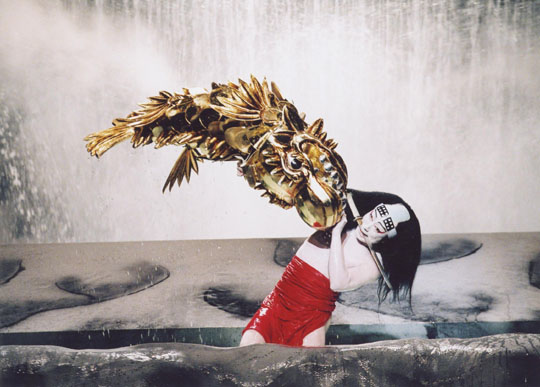In 1610, as ordered by Ieyasu, the founder of the Tokugawa shogunate, the shogunal main office of Owari province (present-day Aichi Prefecture) was moved from Kiyosu to Nagoya, where a new castle was built. To commemorate the beginning of this magnificent castle's construction, which boasted a five-storied main tower crowned with a pair of large gold shachihoko (mythical dolphinlike creature), the National Theater of Japan is presenting a kabuki play titled "Asahi ni Kagayaku Kin no Shachihoko" ("The Gold Shachihoko Shining in the Morning Sun") till Jan. 27.
Written by members of the Literary Division of the Department of Performing Arts headed by Fumio Owada and in consultation with Onoe Kikugoro, 67, a prominent kabuki actor who takes the lead performance, the script for this work is based on a kabuki play by Namiki Gohei titled "Keisei Kogane no Shachihoko" ("Courtesans and the Gold Shachihoko"), which was first staged in Osaka in 1782.
A successful kabuki playwright active in Osaka and Edo during the second half of the 18th century, Gohei wrote many plays that hinged upon a dramatic style of stage production first developed by his master, Namiki Shozo. His "Gold Shachihoko" centers on a unique character named Kakinoki Kinsuke, the son of Yayosu Hachikan, a Korean general who was killed by Daimyo Oda Haruhide, and Muraji, a Japanese woman. Swearing to avenge his father's death, Kinsuke declares war against the houses of Daimyo Oda and Shogun Ashikaga by stealing one of the Nagoya Castle's shachihoko.



